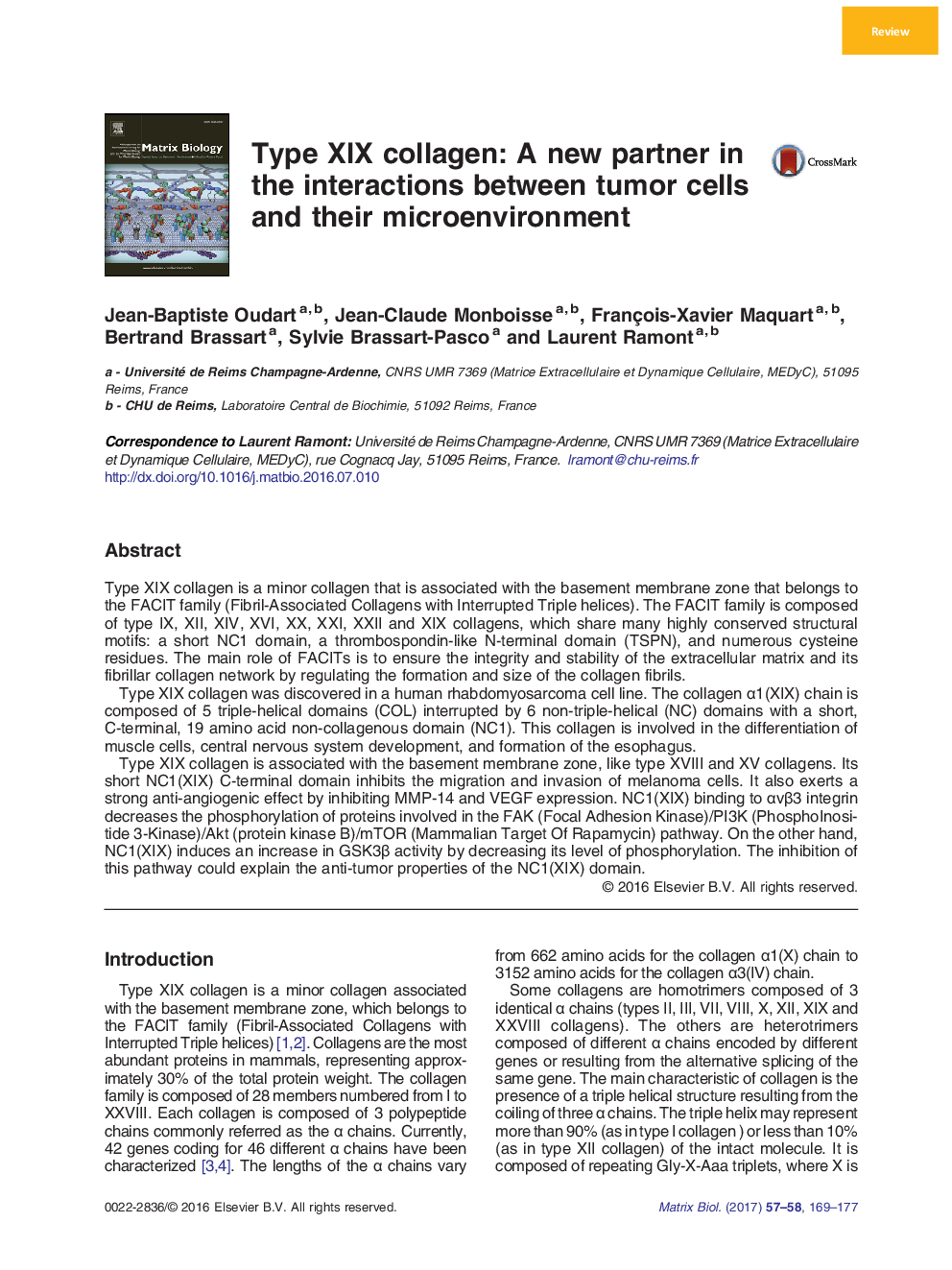| کد مقاله | کد نشریه | سال انتشار | مقاله انگلیسی | نسخه تمام متن |
|---|---|---|---|---|
| 5528527 | 1548003 | 2017 | 9 صفحه PDF | دانلود رایگان |

- Type XIX collagen is a collagen that is associated with the basement membrane zone.
- Its short NC1(XIX) C-terminal domain inhibits melanoma tumor growth.
- NC1(XIX) binding to αvβ3 integrin decreases the phosphorylation of proteins involved in the FAK/PI3K/Akt/mTOR pathway.
Type XIX collagen is a minor collagen that is associated with the basement membrane zone that belongs to the FACIT family (Fibril-Associated Collagens with Interrupted Triple helices). The FACIT family is composed of type IX, XII, XIV, XVI, XX, XXI, XXII and XIX collagens, which share many highly conserved structural motifs: a short NC1 domain, a thrombospondin-like N-terminal domain (TSPN), and numerous cysteine residues. The main role of FACITs is to ensure the integrity and stability of the extracellular matrix and its fibrillar collagen network by regulating the formation and size of the collagen fibrils.Type XIX collagen was discovered in a human rhabdomyosarcoma cell line. The collagen α1(XIX) chain is composed of 5 triple-helical domains (COL) interrupted by 6 non-triple-helical (NC) domains with a short, C-terminal, 19 amino acid non-collagenous domain (NC1). This collagen is involved in the differentiation of muscle cells, central nervous system development, and formation of the esophagus.Type XIX collagen is associated with the basement membrane zone, like type XVIII and XV collagens. Its short NC1(XIX) C-terminal domain inhibits the migration and invasion of melanoma cells. It also exerts a strong anti-angiogenic effect by inhibiting MMP-14 and VEGF expression. NC1(XIX) binding to αvβ3 integrin decreases the phosphorylation of proteins involved in the FAK (Focal Adhesion Kinase)/PI3K (PhosphoInositide 3-Kinase)/Akt (protein kinase B)/mTOR (Mammalian Target Of Rapamycin) pathway. On the other hand, NC1(XIX) induces an increase in GSK3β activity by decreasing its level of phosphorylation. The inhibition of this pathway could explain the anti-tumor properties of the NC1(XIX) domain.
Journal: Matrix Biology - Volumes 57â58, January 2017, Pages 169-177